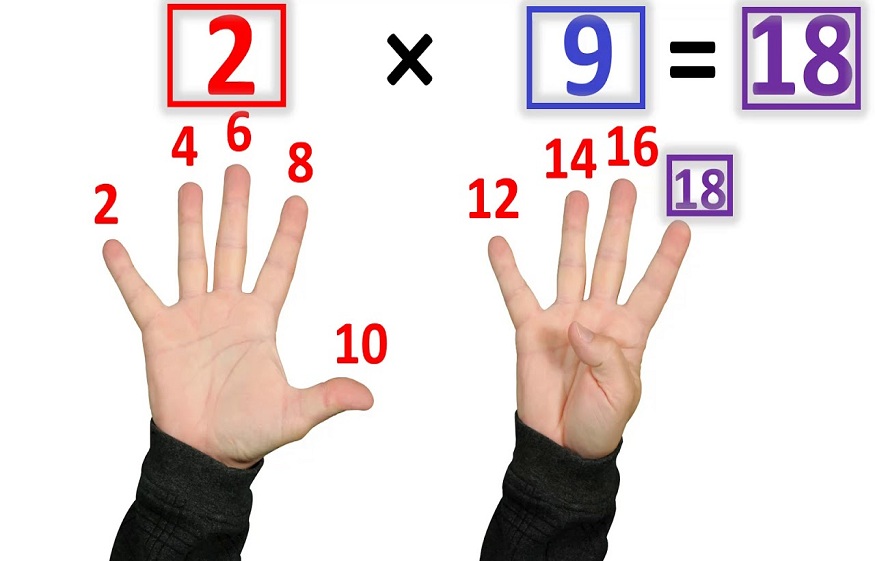Many children have difficulties when it comes to learning the multiplication tables. As parents, we sometimes feel obligated to help your child in whatever way we can. He will need to know perfectly, in any case, his multiplication tables and to calculate quickly throughout his schooling, from college to high school. Helping your child master all these numbers will take time, a good dose of strategy and above all a lot of patience.
Decide when you can settle down together to devote yourself to this task. Sit down with your child only when you are both available and ready to begin. If you are preoccupied with your own work or if your child is too tired or hungry, this learning session may take longer than expected and is unlikely to be as successful. Start with a 30 minute session together. Don’t get distracted, neither you nor him.
Your energy and enthusiasm are your best assets, for both of you. No television, no telephone, no music, no one around. Sit at a table with a few snacks, water, and get to work.
Start with the tables of 0, 1, 2, and 3. It is important to organize and divide the work into sessions and not try to learn all the tables at once. Remember that your child should not be multiplying or counting, he is just memorizing. In class, he must have seen the basic concept of multiplication.
If your child has just started multiplication, start by using addition, i.e. 4 x 3 means 4 + 4 + 4.
Ask your child to take their math book or notebooks. So you will see what he has already seen in class and also the method used by the teacher. This may be quite different from the one your teacher used in your time.
Try to get a list (by number) and a table. A double-entry table is useful for finding the result at the intersection of the rows and columns corresponding to the chosen numbers. Lists (by number) are easier to use for those just starting out.
A line (in the table) for a single number is more complicated to understand. If you wish, show your child that each number (each line) can be colored in a different colour.
Explain that multiplication is commutative, with simple words: indeed, in the table, the answers are the same, in one direction as in the other. You can reverse the order of the numbers and the result is the same.
When your child has learned the tables of 0, 1, 2 and 3 well, continue with the tables of 4, 5, 6 and 7, then finish with the tables of 8, 9 and 10. If you want to go further, show teach him the tables of 11 and 12. Some teachers teach the multiplication tables of 11 and 12, so that students can work at their own pace and thus encourage the best students to learn more.
Discuss apparent little tricks, similarities, tips that make it easier to memorize tables. Mainly in the table. Ask him the questions. It is important that he is the one who finds these similarities. To find them, he will have to observe, he will thus engrave the painting more in his head. If he finds them, he will remember them more easily. Show him the way, tell him that you have found a new similarity in such a column. Give him clues to guess. Pretend to search too. Never forget that you are a role model for him.
Use all possible shortcuts. We’re in luck: math is full of tips and tricks! Teach them to your child. He will be impressed and thank you (hopefully).
For the table of 9, use the fingers of the hand: stretch your 10 fingers in front of you, palm down. When you pronounce 9 x 1, bend your little finger. What are you showing your child? 9 fingers. When you pronounce 9 x 2, bend a second finger (the directory) and raise the little finger. What are you showing your child? 1 and 8 fingers, so the answer is 18. For 9 x 3, raise the directory and bend the middle finger. What are you showing your child? 2 and 7 fingers, so the answer is 27, etc. This works with the whole table up to 81.
Start by testing it on the first tables, the simplest ones, for a few days. Then go up, but maintain order for a few more days. As you go, shuffle the tables: the easiest in the mess for a few days, then end up with all the tables in the mess, after several weeks. Insist until he gives you the right answer quickly. Don’t lose heart. There may be a drop in interest, it’s normal, insist. It’s time to invent a new challenge. Have a competition between you two!
Make it fun, all the time. Multiple competitions, games, copy the table as quickly as possible without error, time each other, orally, in writing, on the Internet, Multi speed play, etc.





